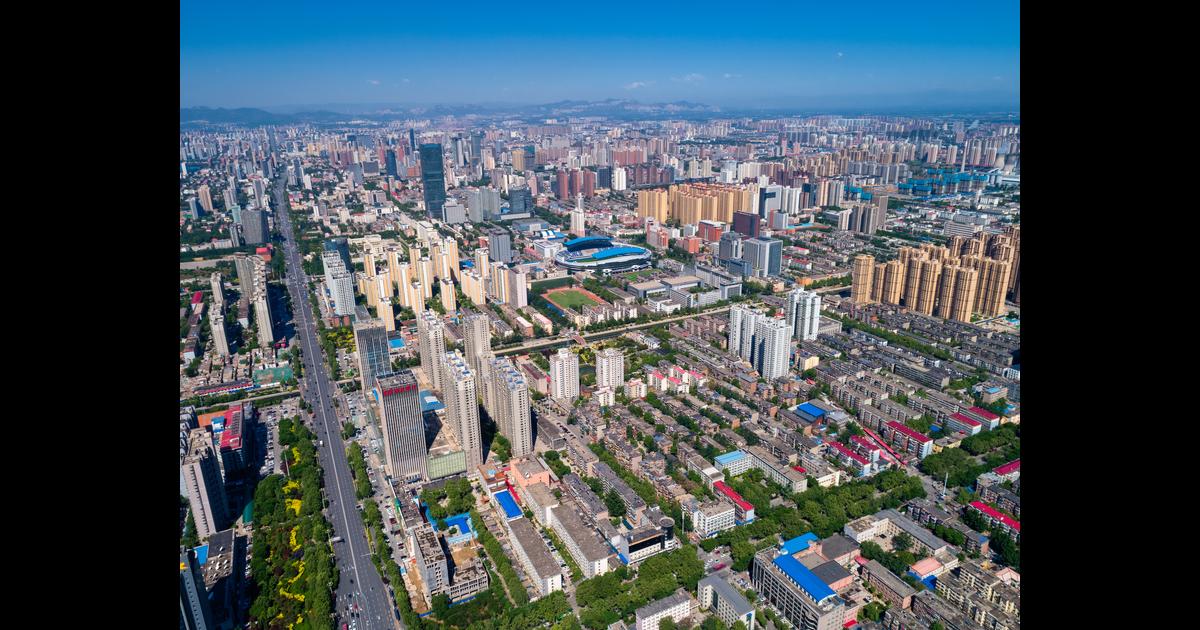Shijiazhuang is the capital and largest city of Hebei Province in northern China. As both a native of Shijiazhuang and someone who has lived abroad, I want to share some insights into what life is like in this city. Whether you’re considering moving to or visiting Shijiazhuang, here are some key things you need to know.
Climate and Seasons in Shijiazhuang
Shijiazhuang experiences a four-season continental climate typical of northern China. Summers are very warm and humid, with highs averaging around 35°C in July and August. Winters are cold and dry, with average lows of -5°C in December and January. Spring and autumn serve as brief transition periods between the extreme heat and cold. If you’re from northern China, the climate will feel very familiar. However, people from southern China or warmer countries need to prepare for Shijiazhuang’s frigid winters. Bundle up with multiple layers, thermal underwear, a wool coat, hat, and gloves. The dry winter air can be harsh on skin, so moisturize daily. Visitors from places like eastern Canada may find Shijiazhuang’s winters mild in comparison. While the temperatures are lower, summer heat and humidity in Shijiazhuang can also pose challenges. Staying indoors with air conditioning is advisable on very hot days.

Food Choices in Shijiazhuang
The cuisine in Shijiazhuang reflects northern Chinese tastes and influences. Staples include wheat noodles, steamed and pan-fried buns, dumplings, and meat-focused dishes. Local specialties include pig’s leg with rice, which is slow braised until tender. While you can find restaurants serving Sichuan, Dongbei, and other regional cuisines, options for international foods are still growing. Those missing cuisine from their home country may want to learn basic Chinese cooking to satisfy cravings. Stocking a kitchen with staples like rice, noodles, oils, sauces and aromatics empowers home cooking. Food safety has dramatically improved in China, but sticking to established restaurants is still prudent, especially with raw foods. Be aware some street vendors may not follow the strictest hygiene practices. Carry hand sanitizer and don’t purchase foods that have been sitting out too long.
Transportation in Shijiazhuang
Getting around Shijiazhuang is convenient due to a robust public transportation network. The city’s metro system currently has two lines totalling over 50 km, with stations located every 2-3 km. Fares are very affordable at 3-5 yuan per ride. Over 145 bus routes cover most areas, and cashless payment options like WeChat Pay are accepted onboard. Ride-hailing services like Didi are very popular alternatives to taxis. Bicycles and electric scooters provided by companies like Mobike or OFO are a green and healthy option for shorter trips, though biking skills and road safety awareness are important. Shijiazhuang also has high-speed rail connections to major cities like Beijing, making domestic travel easy. Overall transportation infrastructure enables easy access within Shijiazhuang and to surrounding towns. New metro and bus lines are continually expanding reach. For independent travelers, make sure to have Chinese map apps downloaded offline in case of connectivity issues. Public signage is improving but still mostly in Chinese.
Culture and Activities in Shijiazhuang
While Shijiazhuang lacks the raw cultural energy of first-tier cities, community spirit runs deep. Local parks and plazas come alive with exercisers, games of cards and mahjong, dancing groups, and other social pastimes. Tai Chi in the mornings and square dancing in the evenings are beloved traditions. Major cultural draws include Zhengding Ancient City just 30 minutes away by train or bus. This well-preserved walled town reflects Hebei’s historic role along the Great Wall and Grand Canal. Shijiazhuang’s museums housed in traditional siheyuan courtyards showcase ethnic folk art, calligraphy, and revolutionary history. Temple fairs during Lunar New Year bring crowds for snacks, performances, and blessings at sites like Xinhua Temple. Shopping malls adjacent to metro stations satiate modern desires for food, electronics, and apparel. International restaurants and KTV lounges add diversity. Overall affordable living costs leave room in the budget for entertainment.
Living in Shijiazhuang as a Foreigner
Shijiazhuang offers foreigners a comfortable quality of life. Housing and groceries are significantly cheaper than major gateway cities, and international schools are growing. While economic prospects may not equal tier one areas, foreign expertise remains in high demand in industries like education, technology and healthcare.
Relative to large metropolises, competition for jobs is lower. With dedication to learning Chinese and culture, expats can integrate well. Most locals embrace diversity and lend a helping hand to foreigners navigating cultural differences. Safety is usually not a concern.
Challenges include winter air pollution and a language barrier. It may take time adjusting to the pace and social norms of a smaller inland city compared to coastal hubs. Reliable health services require research. However, Shijiazhuang makes for a viable options for foreign residents balancing opportunities with affordable living. Patience, cultural openness and community involvement fosters a quite pleasant lifestyle.
I hope this overview of Shijiazhuang gives you a balanced perspective on living in this capital city of Hebei Province. Please let me know if any other aspects of the locale could use further explanation based on your interests or situation. I’m always happy to share more details about my hometown.

 Travel Safety Tips in Lima, Peru
Travel Safety Tips in Lima, Peru